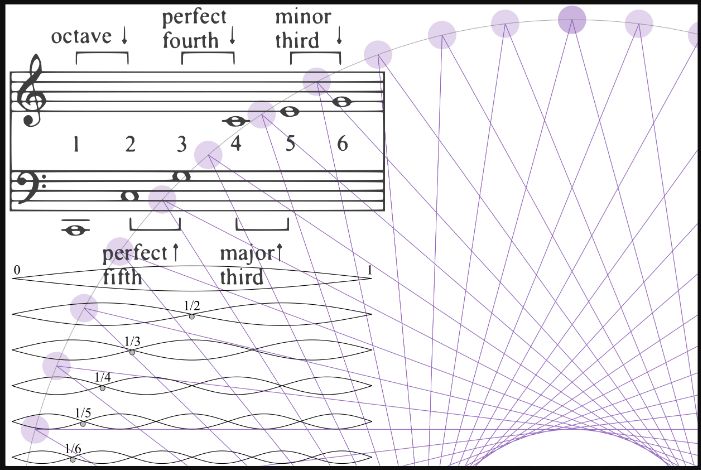Music is Math in Action
Marty Leeds has been writing songs and poetry for over 18 years and has had an interest in everything from philosophy, to esoterica, mathematics and the sciences. He was born and raised in southern Wisconsin and has lived in Washington, Oregon and Colorado. Marty returns to Red Ice Radio to discuss “mathemagics,” Gematria and the English alphabet. In his new book, Leeds has constructed a cipher that is based on the phalanges of the hands, breaking down the English alphabet in two major sections, just as we have two hands and then assigning each letter with a number corresponding to the sections of the hand. He’ll discuss the words that have a numerical value and significance according to Pi and speak about other mathematical constants. In the second hour, we discuss science, knowledge, perception, the potential of mankind and people’s convictions of their own beliefs. Later, Marty deconstructs Skull and Bones. He talks about mirroring, opposition, games and rituals.
===
Marty Leeds is a musician, mathematician, and author known for his exploration of the mathematical and geometric principles underlying music, art, and language. In his work, he often emphasizes the interconnectedness of mathematics, music, and symbolism.
One of Marty Leeds’ central ideas is that music is inherently mathematical, with patterns, ratios, and harmonies that can be understood through mathematical principles. He delves into topics such as the mathematical relationships between musical intervals, the geometric structures found in musical scales and chords, and the numerical symbolism embedded in musical compositions.
Leeds often discusses the role of sacred geometry and numerology in music, drawing connections between musical theory and ancient systems of symbolism. He explores how concepts such as the Fibonacci sequence, the golden ratio, and geometric shapes like the circle and the triangle appear in musical compositions and structures.
Through his books, videos, and lectures, Marty Leeds seeks to demonstrate how mathematics can deepen our understanding and appreciation of music, revealing the underlying order and beauty inherent in musical expression. He encourages listeners and readers to explore the mathematical foundations of music and to recognize the profound connections between mathematics, art, and the natural world.
===
Gematria is a system of assigning numerical values to letters of an alphabet, typically for the purpose of exploring hidden meanings and connections within words, phrases, or texts. While gematria is most commonly associated with the Hebrew alphabet and Jewish mysticism, some individuals and groups have also applied gematria principles to the English alphabet.
In English gematria, each letter of the alphabet is assigned a numerical value based on its position in the alphabet. For example, the letter A may be assigned the value 1, B the value 2, C the value 3, and so on, up to Z, which may be assigned the value 26.
The application of gematria to the English alphabet can involve various methods and interpretations, including:
1. Simple Gematria: In simple gematria, each letter is assigned its corresponding numerical value, and words or phrases are then analyzed based on the total numerical value of the letters. For example, the word “love” (L=12, O=15, V=22, E=5) has a total numerical value of 54.
2. Ordinal Gematria: In ordinal gematria, the numerical value of each letter is based on its position in the alphabet, without reducing values to a single digit. For example, the letter A has an ordinal value of 1, B has a value of 2, and so on. The word “love” would have an ordinal value of 12+15+22+5=54.
3. Reduced Gematria: In reduced gematria, the numerical values of letters are reduced to a single digit by adding their digits together. For example, the word “love” would have a reduced value of 5+4=9.
4. English Gematria Systems: Some practitioners of English gematria have developed their own systems for assigning numerical values to letters, often based on personal interpretations, mathematical formulas, or esoteric principles.
It’s important to note that English gematria is not as firmly established or widely recognized as Hebrew gematria, and interpretations of numerical values in English words and phrases can vary widely depending on the methodology used. While some people find significance and meaning in English gematria, others may view it as pseudoscience or numerological speculation. As with any form of divination or interpretation, individuals should approach gematria with critical thinking and discernment.
